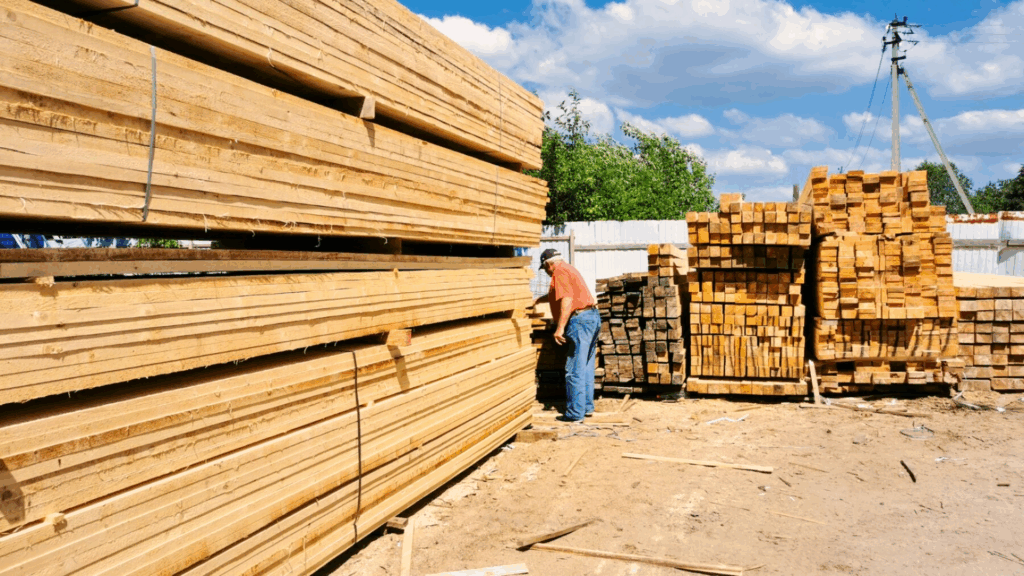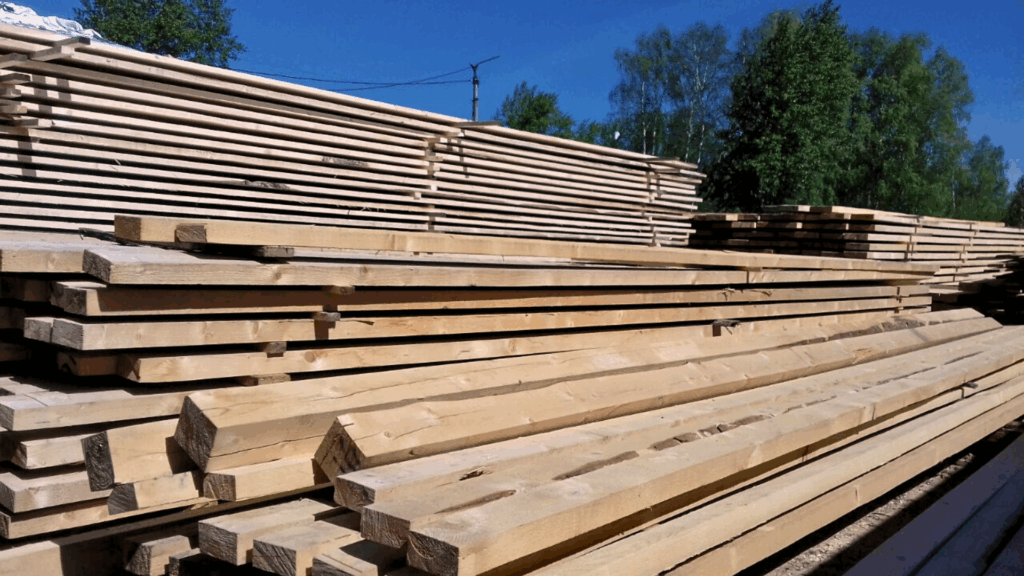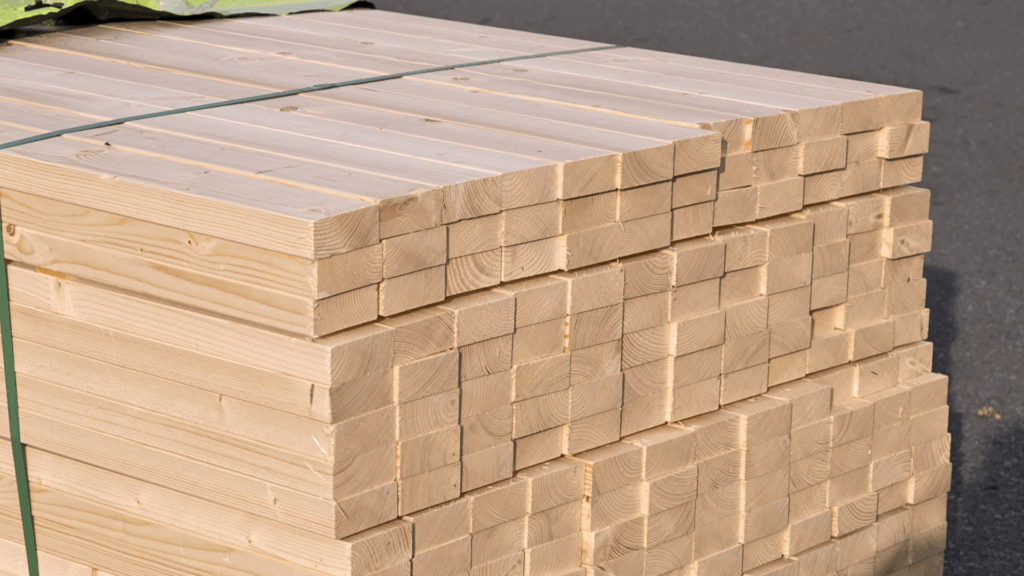Ever stood in a lumber aisle and wondered what SPF means? You’re not alone. Those three letters can be confusing when you’re trying to pick the right wood for your project.
Knowing your lumber types matters a lot, if you’re building a wall or fixing up a shed. Using the wrong type can cost you time, money, and lots of frustration.
In this blog, you’ll learn about SPF lumber, its main benefits, and exactly when to use it for your home projects.
I’ve talked with builders who use these materials daily so that you can trust the advice here comes from real-world experience.
By the time you finish reading, you’ll know exactly what to ask for at the store and why it might be the perfect choice for your next project.
What is SPF Lumber?
SPF stands for Spruce-Pine-Fir – but don’t think it’s wood from some special tree with this name. It’s actually a group of different trees sold together.
When you buy SPF lumber, you’re getting wood that could be from spruce trees, pine trees, fir trees, or a mix of these.
Lumber yards and stores group these woods together because they share similar traits. SPF is softwood, not hardwood.
This means it’s less dense than woods like oak or maple. Why do builders use it so much? Two main reasons:
- It costs less than many other woods
- You can find it almost everywhere
I’ve seen SPF used in most home frames and basic construction projects. If you look at the bones of your house right now, chances are good that SPF lumber holds up your walls and roof.
You might notice SPF has a yellowish-white color when fresh cut, and it often has visible knots throughout.
These knots don’t usually cause problems for standard building needs. When you’re planning your next project, remember that SPF gives you good value for everyday construction work.
Key Physical and Mechanical Properties of SPF Lumber

1. Weight and Strength
SPF lumber won’t break your back when you carry it. It’s much lighter than hardwoods, which makes it easier to handle on job sites.
Despite being light, it holds up well under pressure. Because of this good balance between weight and strength, I’ve used it for wall studs and roof trusses.
2. Nail and Screw Performance
When you drive nails or screws into SPF, they tend to stay put. The wood grips fasteners well without splitting too easily. This quality makes SPF very builder-friendly.
I find pre-drilling isn’t always needed, which saves time during construction. Your screws will bite in nicely and hold firm for most standard building tasks.
3. Texture and Surface
Look closely at SPF and you’ll notice its even texture. The grain pattern stays fairly consistent throughout each piece.
Its surface feels smoother than some other construction woods. This means less sanding when you need a decent finish. Your paint and stains will go on more evenly too.
4. Moisture Behavior
SPF comes from the mill with some moisture still inside. As it dries in your home, it might shrink a bit.
You should let it sit at your work site for a few days before using it. This helps avoid issues later.
I’ve seen rushed projects develop gaps as the wood dried out after installation.
Applications and Uses of SPF Lumber

1. Home Framing
Most houses stand on SPF bones. This lumber makes up the hidden structure inside your walls. It works great for studs, headers, and the skeleton of your home.
I’ve framed dozens of houses with SPF because it’s strong enough to hold up walls and roofs. You can count on it for both small room additions and entire home builds.
2. Floor and Roof Systems
Your feet likely walk on floors built with SPF joists underneath. These horizontal supports carry the weight across spans in your home.
I regularly use SPF for floor frames and roof systems. It also works well for ceiling joists. The boards come in long lengths, perfect for creating stable bases for floors and roofs.
3. Furniture Building
Need a bookshelf that won’t empty your wallet? SPF can help. It’s perfect for basic furniture projects where cost matters.
I built my first workbench from SPF lumber. You can sand it smooth enough for indoor pieces, and it takes stain reasonably well. Just don’t expect fine furniture results without extra work.
4. Indoor Projects Only
Keep SPF inside unless treated. Regular SPF rots quickly outdoors because it lacks natural oils and resistance to weather.
I learned this lesson when my untreated SPF garden stakes failed after one season.
You should choose cedar or treated lumber for outdoor projects instead. SPF shines indoors where it stays dry.
Where Does SPF Lumber Come From?

Most SPF lumber grows in the cold forests up north. The trees thrive in Canada’s vast woodlands and across the northern states of the U.S.
These cooler regions provide perfect growing conditions for spruce, pine, and fir trees. I’ve visited lumber mills in places like Maine and British Columbia where these trees are processed.
You might notice slight differences in SPF depending on which region it comes from. The trees used for SPF grow fairly quickly compared to hardwoods.
While an oak might take 80+ years to mature, many SPF trees reach harvest size in 20-40 years. This faster growth helps keep the supply steady and prices reasonable.
Forest management has improved over time. Many lumber companies now plant multiple new trees for each one cut down.
This helps ensure we’ll have wood for future generations, too. When trees are harvested, they go through different drying processes:
- Kiln-dried lumber gets baked in large ovens to remove moisture quickly. I prefer this type for indoor projects because it’s less likely to warp later.
- Green lumber hasn’t been fully dried. You might pay less for it, but you risk more shrinking and twisting as it dries in your home.
SPF vs. Other Types of Lumber
Knowing the differences between wood types can save you money and headaches when picking lumber for your project.
| Wood Type | Strength | Weight | Best Uses | My Take |
|---|---|---|---|---|
| SPF | Good | Light | Indoor framing, basic furniture | Perfect for most home projects where budget matters. I use it for wall framing and simple builds. |
| Douglas Fir | Very High | Medium | Heavy beams, floor joists | Stronger than SPF but costs more. You might want this for long spans or heavy loads. I choose it for basement beams. |
| Pressure-Treated | Same as base wood | Heavy (wet) | Decks, outdoor structures | Not a wood type but a treatment. Resists rot but costs more. The chemicals make it last outside. I never use untreated wood for my deck posts. |
| Hem-Fir | Medium | Light | Similar to SPF uses | Slightly weaker than SPF but often cheaper. You might not notice the difference in simple projects. |
| Southern Yellow Pine | High | Heavy | Floors, high-stress areas | Denser and harder than SPF. Holds screws better but weighs more. I find it tougher to cut, but worth it for floors. |
When to choose SPF: If you’re building interior walls, basic shelving, or any indoor project where extreme strength isn’t needed, SPF will serve you well and keep money in your pocket.
Conclusion
SPF lumber stands as one of the most useful materials in construction. It gives you good strength without emptying your wallet.
After years of building with different woods, I keep coming back to SPF for most indoor projects.
What makes SPF special? It’s the balance it offers. Not too expensive, not too heavy, and strong enough for most home needs. Remember that SPF works best indoors.
It won’t hold up outside unless treated. For walls, floors, basic furniture, and countless other indoor uses, this lumber proves its worth time and again.
I’ve built everything from small shelves to entire home additions with SPF, and it rarely disappoints.
Next time you’re at the hardware store, don’t overlook SPF, it might be just what your project needs.
Take a good look at those affordable 2x4s. They could be the perfect solution for bringing your next building idea to life.

